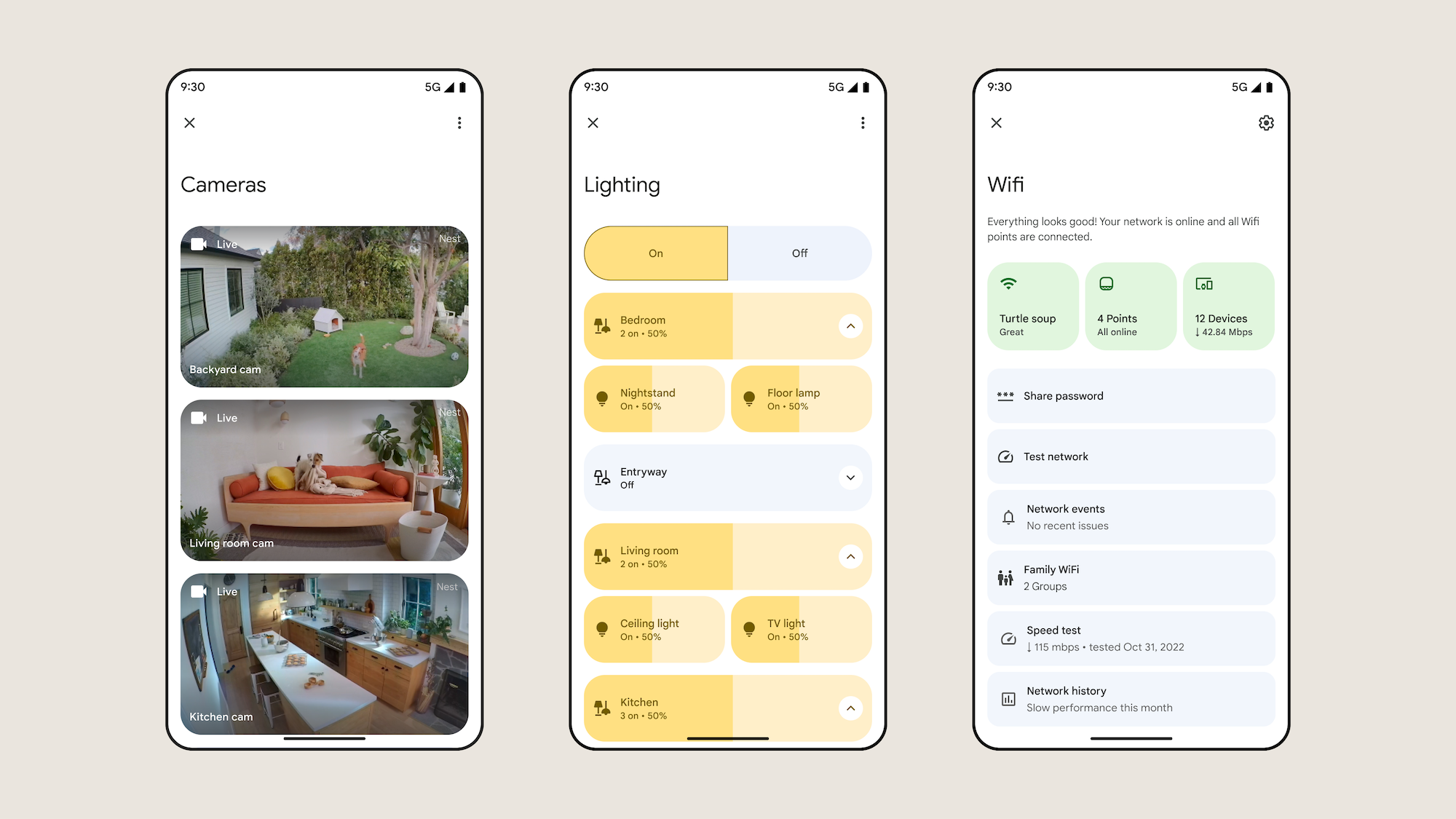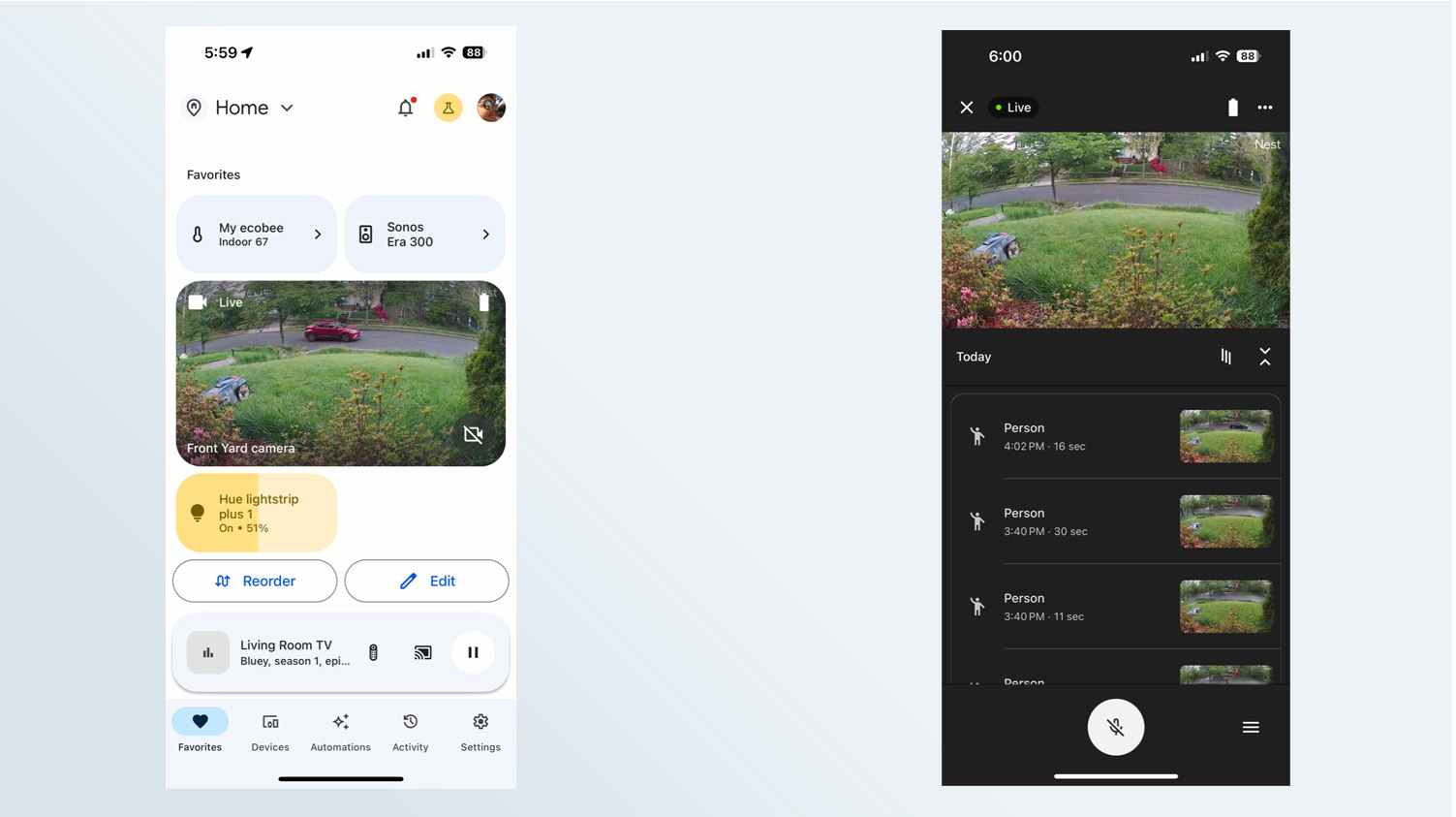The new Google Home app is way easier to use — but that’s not all

Like HGTV for the smart home, Google Home is getting a makeover. First announced at Google's October 2022 hardware event, the revamped Google Home app is now in public beta, and promises a friendlier user interface as well as some more advanced automations to make using your smart home devices easier.
Along with hardware such as the Pixel Fold, Pixel 7a, and Pixel Tablet, we expect to hear some more announcements around Google Home at Google I/O next week when the developer conference gets underway May 10. However, Google Home users have been able to request access to the public beta before then, so I did; I've been playing around with the new interface for a few days to see how it compares to other smart home platforms.
Here's what Google Home looks like, and here's what I think about the software so far.
A fresh look

The new Google Home app borrows heavily from both SmartThings and Apple's Home app, which isn't a bad thing. At the top of the main screen are several cards which group your smart home devices into several categories: Cameras, Lighting, and Climate, for instance.
Below that are your Favorites — devices that you use the most. Here, for example, I added a card for one of my security cameras (a Eufy Indoor Cam), which shows a live view from the camera. Above that are smaller cards for my Ecobee SmartThermostat and Sonos Era 300.
Click on any of these cards, and you're brought to another screen with additional controls for each device. If I clicked on the Ecobee card, I could then adjust the temperature of the thermostat. Pressing the Sonos card lets me control the volume of the speaker as well as play, pause, or skip tracks.
However, these controls are somewhat limited. If nothing was playing already on the Sonos, I couldn't select a music source from within the Google Home app.
Get instant access to breaking news, the hottest reviews, great deals and helpful tips.
And, with the security camera, all I could do was look at a larger live image from the camera. On the Apple Home app — which is connected to a Logitech Circle View camera — I was able to use more of the camera's features, such as select an option to start recording and enable two-way talk. This may be a limitation by Eufy rather than Google, but it's a limitation nonetheless.
In its public beta preview page, Google states that the ability to view recorded video from cameras is only available for cameras that were set up using the Google Home app — such as the Nest Cam (battery), Nest Cam with floodlight, Nest Cam (indoor, wired), Nest Doorbell (battery) and Nest Doorbell (wired, 2nd gen) — but that support for older cameras will be coming in the future.
Sadly, the new Google Home app doesn't support some older Nest devices, such as the Nest Protect. As I noted last year, some legacy Nest devices, such as the Nest Learning Thermostat, won't have Matter support. Here's hoping that Google releases newer versions of these devices, or figures out some way to support them in the new Google Home app.

Aside from the Favorites, the bottom of the Google Home app has tabs for Devices, Automations, Activity, and Settings.
Devices lists all of your connected smart home devices, grouping them into rooms that you designate, such as Family Room, Bedroom, and Kitchen.
Automations is similar to Alexa routines; these are automated actions that you can program based on predetermined events. For example, the Good Morning automation can have your lights turn on, your blinds raise, and your smart speaker tell you the news and weather for the day. This can be triggered when you say "Good Morning" to Google Assistant, at a certain time, or when you turn off an alarm on a smart speaker or display.
The Activity tab feels a little extraneous — it just lists what you've done in the Google Home app, such as adding or removing devices.
Lastly, the Settings tab also presents you with a list of all of your devices, but here you can also connect your Google Home account to streaming services such as Netflix and Disney Plus, music services such as Spotify, podcasts, and notes & lists — should you want to have Google Assistant link your shopping list with your Google Home devices, for instance.
Better automations — finally

Apart from the refreshed interface, the biggest and most important change that Google is making to the Home app is that it now allows you to create automations based on the status of a particular smart home device.
For example, if a Philips Hue motion sensor detects movement, you can now create an automation to play music through a connected speaker, adjust your thermostat's temperature, and turn on some lights.
Previously, you could only create automations based on the time of day or when you issued a command to Google Assistant. That was a lot more limiting than what you can do with SmartThings, Alexa or Siri via the Apple Home app.
Even now, these new automations in the Google Home app aren't as robust as the competition — for example, I couldn't use the temperature or motion sensor of my Ecobee thermostat to create an automation — but it's a step in the right direction.
One feature that was promised but I have yet to see is a script editor, which will let power users make even deeper automations by tweaking the code, something you can do on advanced smart home hubs like the Hubitat.
Google Home outlook
The redesigned Google Home app couldn't have come at a better time. Now that more and more devices are supporting Matter — making it easier to use smart home devices — a more intuitive way to use those devices was needed. Yes, it largely apes what Apple and SmartThings have done, but it's a design that works.
What I'm most interested to see is how far Google will go with automations. It's heading in the right direction, but there's still a sizable gap between it and the other leading smart home platforms.
More from Tom's Guide

Michael A. Prospero is the U.S. Editor-in-Chief for Tom’s Guide. He oversees all evergreen content and oversees the Homes, Smart Home, and Fitness/Wearables categories for the site. In his spare time, he also tests out the latest drones, electric scooters, and smart home gadgets, such as video doorbells. Before his tenure at Tom's Guide, he was the Reviews Editor for Laptop Magazine, a reporter at Fast Company, the Times of Trenton, and, many eons back, an intern at George magazine. He received his undergraduate degree from Boston College, where he worked on the campus newspaper The Heights, and then attended the Columbia University school of Journalism. When he’s not testing out the latest running watch, electric scooter, or skiing or training for a marathon, he’s probably using the latest sous vide machine, smoker, or pizza oven, to the delight — or chagrin — of his family.
